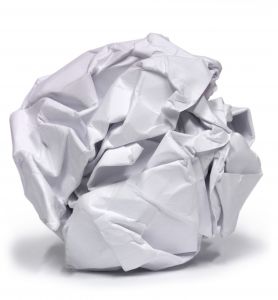 Electronic waste (e-waste) or Waste Electrical and Electronic Equipment (WEEE) are the terms used to describe old, end-of-life or discarded appliances using electricity. It includes computers, consumer electronics, batteries etc. which have been disposed of by their original users.
Electronic waste (e-waste) or Waste Electrical and Electronic Equipment (WEEE) are the terms used to describe old, end-of-life or discarded appliances using electricity. It includes computers, consumer electronics, batteries etc. which have been disposed of by their original users. 
E-waste is of concern largely due to the toxicity of some of the substances such as lead, mercury, cadmium and a number of other substances which are harmful to human health and ecosystems if not disposed of properly. When e-waste breaks down either as litter or in improper landfills, the toxic mix can leak into surface and ground waters. The material that the products are made from can be recycled to get raw material that can be reused, meaning less energy (and carbon emissions) is required in the manufacturing, mining and processing.
The unsustainably rapid turnover of discarded electronics and computer technology is another reason for the need to recycle – or even better, re-use – e-waste.
More information: www.ewasa.org
What will happen to the e-Waste?
The contractors will separate the waste into items that
- can be refurbished,
- can be recycled and
- must be safely disposed of.
Refurbishment of appliances and computers provides jobs and these items are then reused in needy schools and communities. Useful, scarce and valuable metals and other substances are extracted by recycling, while toxic e-waste is disposed of in special hazardous waste facilities. Examples of potentially toxic items include the old type of computer screens (CRT) and fluorescent tubes.
Some fast facts
Currently the University purchases on average 500 new computers per annum (without significant growth in inventory), implying that the annual e-waste stream is of a similar magnitude. At any one time 8000 PCs exist on campus, with up to 5000 more in student residences. If one considers that PCs are usually replaced on a 4 to 5-year cycle, the resulting e-waste stream could in fact be far larger.
The IT Division’s TAS division alone disposes of 300-400 lead acid batteries per annum.
To save you from your own e-clutter, you can now dump all your unwanted e-waste at IT and we’ll get rid of it FOR you. For more information, click here.


 Paper is often the major contributor to waste in the office, and it’s the easiest to recycle. The university typically consumes between 54 and 60 million sheets of paper per annum. That’s a lot of paper. Last year IT implemented a new printing management system and already the results are visible.
Paper is often the major contributor to waste in the office, and it’s the easiest to recycle. The university typically consumes between 54 and 60 million sheets of paper per annum. That’s a lot of paper. Last year IT implemented a new printing management system and already the results are visible. Around 44% of old cellphones are lying around unused. Between 65% and 80% of the material content of a cellphone can be recycled or re-used. Now you are able to deposit old cellphones at cellphone outlets in South Africa for recycling.
Around 44% of old cellphones are lying around unused. Between 65% and 80% of the material content of a cellphone can be recycled or re-used. Now you are able to deposit old cellphones at cellphone outlets in South Africa for recycling.